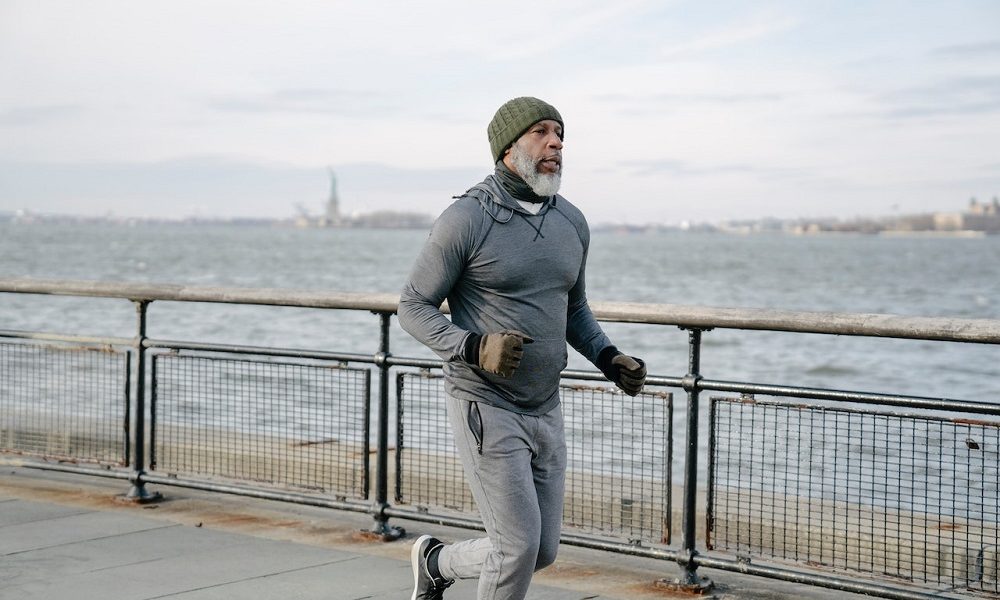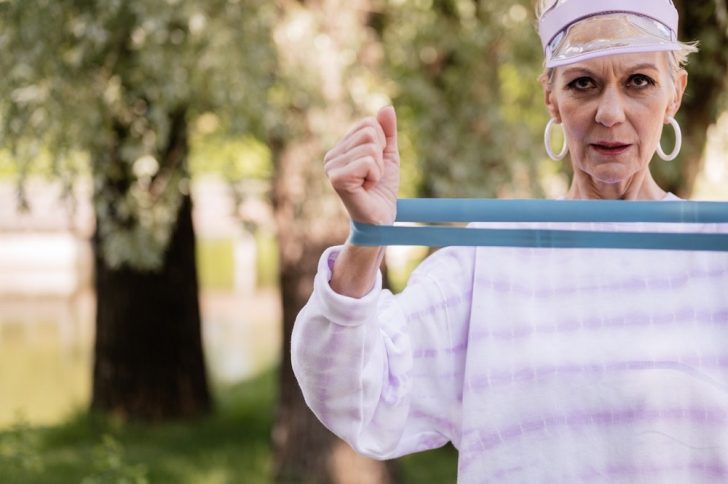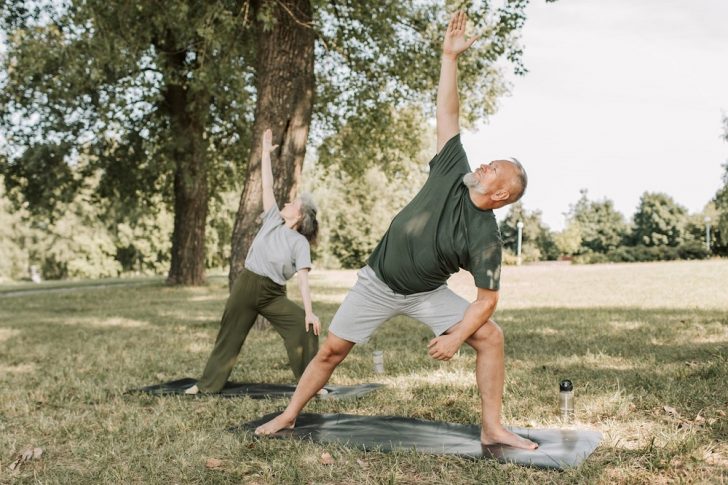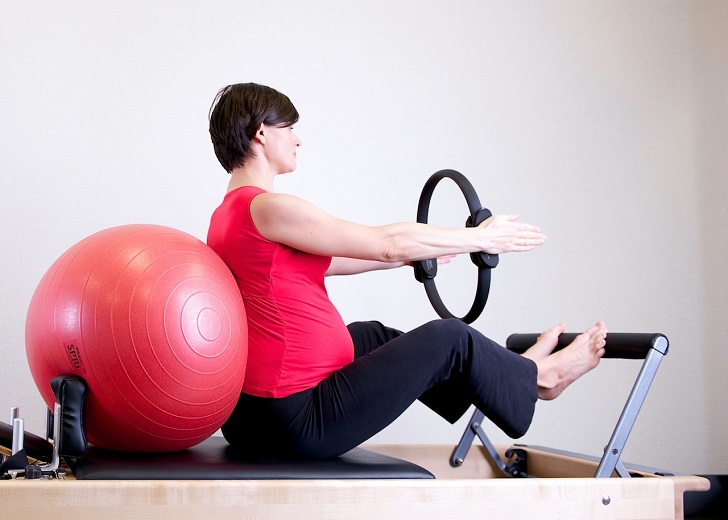
Workout Tips for Women in Their 30s 40s 50s & 60s

Embarking on a fitness journey is a timeless endeavor with numerous physical and mental benefits. As women gracefully move through different decades of life, their bodies and needs evolve. To cater to these changing requirements, here’s a comprehensive guide to workout tips tailored for women in their 30s, 40s, 50s, and 60s.
Embrace Your 30s: Building a Strong Foundation
Your 30s are a pivotal time to lay the groundwork for a healthy lifestyle that will carry you through the years. Here are some workout tips to consider:
1. Variety Matters: Engage in cardio, strength training, and flexibility exercises. This balanced approach burns calories and enhances muscle tone and overall fitness.
2. Strength Training: Incorporate resistance exercises to maintain lean muscle mass and prevent a natural decline in metabolism. Compound movements like squats, lunges, and push-ups are excellent choices.

SHVETS production/ Pexels | Don’t stop until you’re proud
3. HIIT Workouts: High-Intensity Interval Training (HIIT) sessions are time-efficient and boost metabolism. These quick bursts of intense exercise followed by short rests can be customized to your fitness level.
4. Prioritize Recovery: Ensure you sleep enough and consider incorporating yoga or Pilates to improve flexibility and reduce stress.
Navigating Your 40s: Balancing Hormones and Health
As your body experiences hormonal shifts, maintaining an active lifestyle becomes even more crucial. Here’s how to stay on track:
- Mindful Cardio: While cardio remains essential, focus on low-impact options like brisk walking, swimming, or cycling to protect your joints.
- Strength Training Continues: Continue strength training, but pay attention to proper form and gradually increase weights. This promotes bone health and prevents muscle loss.
- Core Work: Incorporate core-strengthening exercises to support your spine and maintain good posture. Planks, bridges, and stability ball exercises are excellent choices.
- Stretching and Flexibility: Regular stretching sessions become paramount to maintain joint mobility and counteract muscle stiffness.

Vlada Karpovich/ Pexels | Exercise is a celebration of what your body can do,
Thriving in Your 50s: Prioritizing Longevity
Entering your 50s doesn’t mean slowing down; it’s an opportunity to focus on longevity and overall well-being:
- Cardio with Care: Continue cardiovascular workouts, but opt for low-impact activities like elliptical training or water aerobics to safeguard your joints.
- Strength Training and Bone Health: Resistance training remains crucial to counteract muscle and bone loss. Incorporate weight-bearing exercises like squats, lunges, and resistance bands.
- Balance and Stability: As balance becomes essential, consider yoga or Tai Chi to improve stability and reduce the risk of falls.
- Listen to Your Body: Pay attention to any signs of overexertion and prioritize recovery. Adequate rest and proper nutrition are key components of a sustainable fitness routine.
Embracing Your 60s: Staying Active and Vibrant
Your 60s mark a time to celebrate your accomplishments and stay vibrant through well-chosen workouts:

Jessica Monte/ Pexels | The only bad workout is the one that didn’t happen
- Gentle Cardio: Continue with cardio activities like walking, swimming, or stationary biking. Always warm up and cool down to protect your heart and joints.
- Functional Strength: Focus on functional movements that enhance daily activities. Bodyweight exercises, resistance bands, and light weights can maintain muscle strength.
- Flexibility and Mobility: Regular stretching becomes even more important to maintain flexibility and ease joint stiffness.
- Low-Impact Activities: Explore options like water exercises, gentle yoga, and even dance classes tailored for seniors to promote physical and social well-being.
Key Takeaway: A Lifelong Commitment
Regardless of your age, staying active is a lifelong commitment that reaps rewards in countless ways. Customizing your workout routine to match your age and needs is pivotal for achieving long-term health and vitality.
Consider a healthcare professional before starting any new exercise regimen, especially if you have any underlying health conditions. By nurturing your body through each stage of life, you’re investing in a brighter, healthier future.
More in Body
-
`
How Breastfeeding Moms Can Sleep Well & Ensure Safer Sleep For Their Babies
Does breastfeeding make you tired? When a mother breastfeeds, her body releases a hormone called oxytocin. This “love hormone” plays a...
September 26, 2024 -
`
Novak Djokovic’s 25th Grand Slam – What to Expect in 2025?
As the tennis season draws to a close, Novak Djokovic faces an unprecedented challenge: ending a year without a Grand Slam...
September 22, 2024 -
`
3 Tips for Rotator Cuff Health to Speed Up Shoulder Recovery
Rotator cuff health tips can help reduce pain and improve mobility after an injury. The rotator cuff is crucial for shoulder...
September 12, 2024 -
`
Christina Aguilera Impresses Fans and Facial Aesthetics Docs With Ultra-Slim & Youthful Look
Christina Aguilera’s weight loss is a hot topic these days, and for good reason. After stepping out of the spotlight for...
September 7, 2024 -
`
Visiting Brussels, Belgium, For the First Time? Here is What You Should See & Do
When exploring the capital of Belgium, you might wonder what the top things to see and do are. This cosmopolitan hub,...
August 28, 2024 -
`
The Pork Adobo Recipe to Take Your Dinner to the Next Level
The pork adobo recipe is a culinary gem that truly showcases the heart of Filipino cuisine. This dish, deeply rooted in...
August 21, 2024 -
`
Can I Shrink My Liver in 2 Days? A Guide to Liver Shrinking Diets
Can I shrink my liver in 2 days? This question is often asked by individuals preparing for weight loss surgery or...
August 16, 2024 -
`
George Conway Weight Loss – How Did He Shed 40 Pounds?
George Conway, the legal eagle turned political commentator, has recently captured the public’s attention for more than his sharp legal mind....
August 5, 2024 -
`
Japan Trip Cost in 2024: A Comprehensive Guide For Beginners
How much would a trip to Japan cost? Well, it is a dream destination for many, but understanding the expenses involved can...
July 31, 2024










You must be logged in to post a comment Login